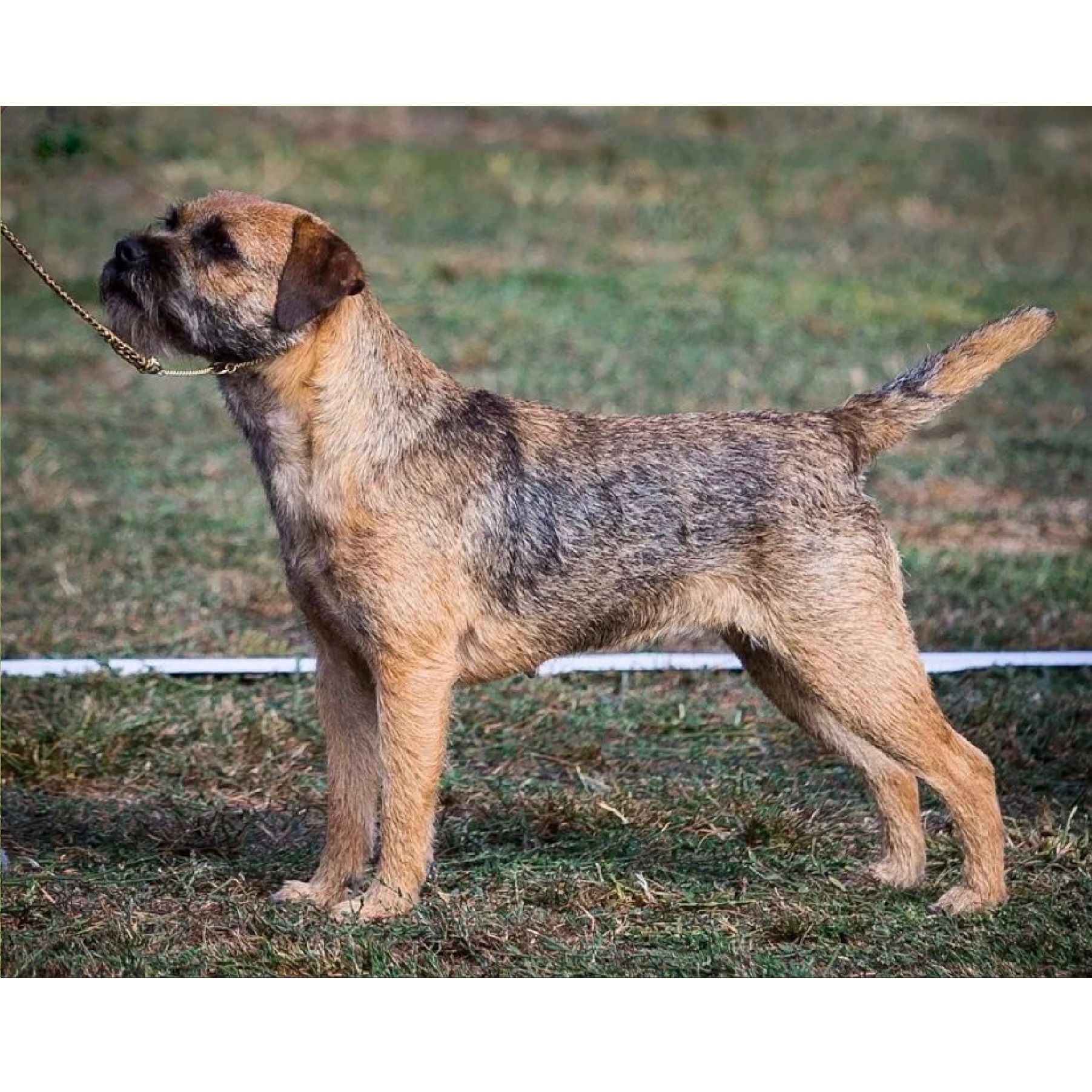Breeds
Border Terrier

GROUP 2 - TERRIERS
Brief History
The Border Terrier originated from the rugged country along the border between Northumberland and Scotland. Originally, he was referred to as the Coquetdale Terrier or Redesdale Terrier, but by the late 1800's he was generally known as the Border Terrier. Essentially a working terrier, they were bred to follow a horse across the Borders landscape and when needed, chase a fox from underground or bark and hold the fox in position to be dug out. This produced a 'game' dog, but not a dog who was aggressive with other dogs or people.
Average Life Span
When considering a dog, please realise that you are taking it on for its lifetime. The average life span is 12 to 15 years.
Temperament
Active, game, alert, reliable.
Borders are a breed that can be trained to do many activities. Their hunting background brings success in pest eradication, their reliability and size are ideal for care home and hospital visits and their agility is perfect for dog sports They are very food driven and respond well to treat rewards. They need plenty of socialising and training from babies and exposure to animals that they will be living with, as they have a strong prey drive and will hunt cats, chickens, rabbits etc if they have not grown up with them. Teaching them to walk off lead and recall should happen from the moment your new puppy arrives.
General Breed Description
The Border Terrier is a light, small sized terrier, distinguishable by their otter like head and small, folded V shape ears. His dark eyes have a keen expression. Borders carry their tail gaily. The Border’s harsh coat comes in red, wheaten, black and tan or grizzle and tan. They are amazingly agile and can find their way up and into places their owners would never suspect. While they are easy going, they are also independent, which needs to be considered when training.
Coat and Care Requirements
The Border Terrier has a double coat consisting of a short, dense, soft undercoat and harsh, wiry, weather resistant, close lying outer coat. The coat ideally should not be clipped but should be hand-stripped, generally twice a year. Weekly brushing is advised. They require attention, training, walking and very good fencing, as they are very agile.
Size
Weight: Males 6 to 7kgs, Females 5 to 6.5kgs.
Health
All breeds have individual health issues. When speaking to breeders it is recommended you enquire about breed health issues and what health testing the breeder does.
Suitability
Borders are a breed that thrive on being involved in the lives of their owners. If left alone for long periods, they may bark and try to escape. They are fabulous with families, elderly and active couples as long as there is someone home more often than not. They are fine with other animals, but best to grow up from babies with cats, rabbits and other small creatures as they have a strong prey drive. Whilst exercise is a must, they are at home in town or country.
In Conclusion
Now you know a little more about this breed. If you have decided this is the dog for you and wish to investigate further, please contact the Breed Club or Dogs Victoria. They will be able to give you information about available puppies and also suggest dog events where you can see the breed and speak to breeders. In this way you will gain a better perspective of the breed and its needs. With any breed of dog, it is important to research and determine suitability for your lifestyle before committing to a puppy which will be a part of your family for many years to come.
Whilst many breeds are recommended for families, it is imperative that when children are with dogs they are supervised at all times. Basic obedience training is a vital part of dog ownership.
Dogs Victoria is about the responsible ownership of all dogs and in particular the preservation of pure breeds.
Link to Dogs Australia Breed Standard: https://dogsaustralia.org.au/breed/detail/39
Breeders





